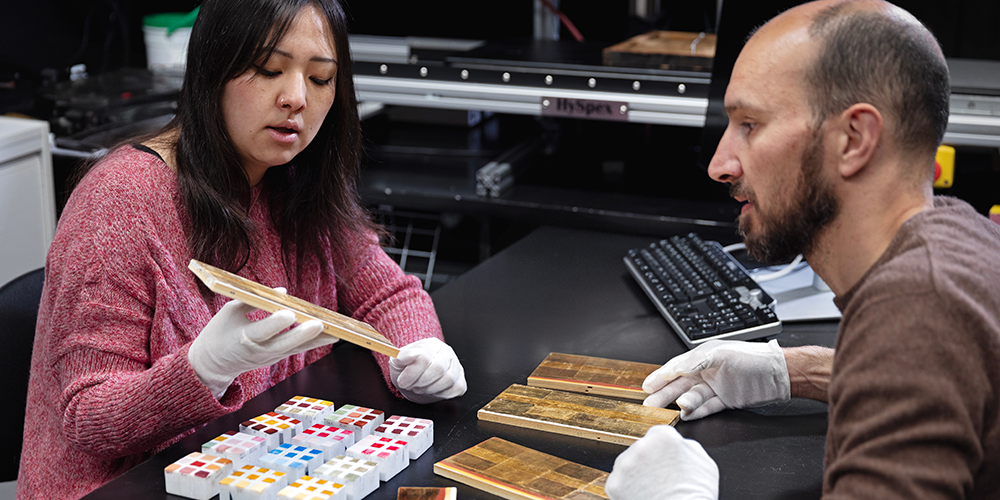Appearance
Research area

Photo: Geir Mogens / NTNU
Assessing apperance
Humans are highly skilled in assessing the appearance of objects. By comparing the relative qualities of materials, such as whether they are soft or hard, smooth or rough, rotten or fresh, we can quickly tell if these are pleasing or may do us harm. When rendering the material appearance, either on a screen, when printing, or manufacturing products, it is important to understand the appearance of materials to make sure the product looks (and sometime feels) authentic.
Apperance is more than just colour
For many years, colour has been one of the main research areas at Colourlab. However, appearance is more than just colour, and traits like translucency, gloss, texture, and shape need to be considered when rendering the exact material appearance. To ensure a more accurate reproduction workflow – from design to manufacturing of a product, it is essential to gain a better understanding in how to capture optical material properties as well as how to measure, model and control material appearance.
Cooperation
In collaboration with experts from all over the world, Colourlab is addressing these research issues through projects like ApPEARS, MUVApp, and MANER to name a few. Projects in this field are focusing on fundamental to applied research in addition to research training at Bachelor, Master, and PhD levels at the Colourlab. Areas of research in the field of material appearance at the Colourlab are Visual appearance understanding, material appearance measurement, reproduction using 2D, 2.5D, and 3D printing and quality.
You can find more information about the projects focusing on appearance in the list below. For any enquireies about the research on appearance, feel free to contact any of the researchers listed below.
